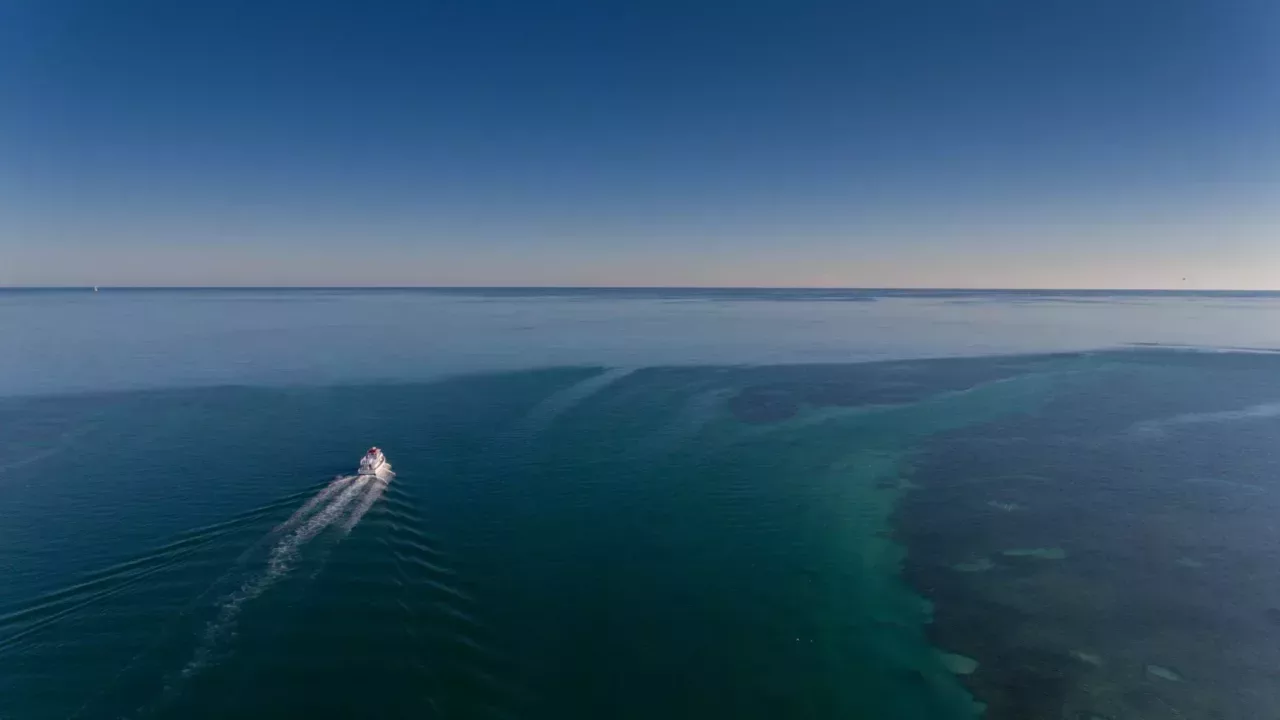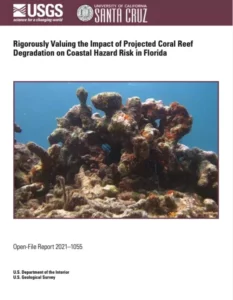Coastal flooding and erosion from extreme weather events affect thousands of vulnerable coastal communities; the impacts of coastal flooding are predicted to worsen during this century because of population growth and climate change.
Hurricanes Irma and Maria in 2017 caused widespread damage to coral reefs and to coastal communities across Florida and Puerto Rico. The aim of this work is to quantify how and where the damage and degradation of reefs could increase flood risk and to identify if and how reef restoration could reduce these risks.
There is growing recognition of the role of nature-based solutions, such as coral reef restoration, to reduce coastal risks. One of the biggest limitation to advancing the use of natural defenses in coastal management, however, is the lack of quantitative assessments of their engineering performance and the social and economic benefits.
To address this limitation, the USGS, UCSC, and NOAA investigated the role of U.S. coral reefs in coastal hazard risk reduction. Risk-based valuation approaches were applied to map flood zones at 10-m2 resolution along all 980+ km of Florida’s and Puerto Rico’s reef-lined shorelines for different storm probabilities. The coastal flood risk reduction benefits provided by coral reef damage, potential restoration, or projected degradation were quantified using the information from the U.S. Census Bureau, U.S. Federal Emergency Management Agency, and U.S. Bureau of Economic Analysis.

KEY FINDINGS:
The protection lost in Florida and Puerto Rico from storm damage to coral reefs during the 2017 Hurricanes Irma and Maria could result in:
- Increased flooding affecting >4,300 people annually
- Increased direct damages of >$57.2 million to >1,800 buildings annually
- Increased indirect damages to >$124.3 million in economic activity due to housing and business damage annually
The protection lost in Florida due to projected future coral reef degradation could result in:
- Increased flooding affecting >7,300 people annually
- Increased direct damages of >$385.4 million to >1,400 buildings annually
- Increased indirect damages to >$438.1 million in economic activity due to housing and business damage annually
The protection gained in Florida and Puerto Rico from potential coral reef restoration could result in:
- Avoided flooding affecting >3,100 people annually
- Avoided direct damages of >$124.2 million to >890 buildings annually
- Avoided indirect damages to >$148.7 million in economic activity due to housing and business damage annually
These results can help prioritize actions and investments by:
- Flood risk managers aiming to understand and mitigate current and future flood risks;
- Hazard management agencies, municipalities, and organizations aiming to reduce coastal risks by investing in the restoration of natural infrastructure and natural and nature-based features;
- Conservation and restoration investments by agencies and NGOs aiming to improve coastal resilience;
- Public and private insurers aiming to incentive and invest in nature-based solutions for adaptation and risk reduction.
Download and read each of the three reports below.




